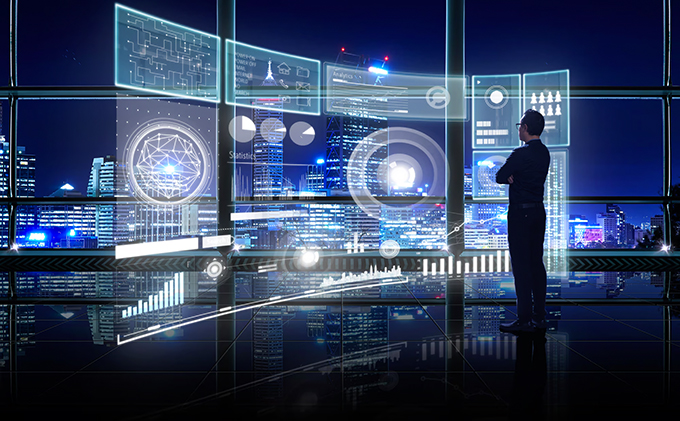When the Internet began to take shape as we know it today in the 1980s, a wave of optimism spread about what this new network of networks could mean as a global and open technological revolution .
It was no wonder: it allowed communication between people living thousands of kilometers away, almost unlimited access to knowledge, new opportunities for collaboration and business, the creation of organizations and new possibilities for social and political participation.
Forty years later we can see that the Internet, as well as the new technologies it has promoted, are not as global or as open as we had hoped. Technology is not neutral: it is imagined, designed, created, built and used by people. Therefore, it reproduces their intentions, priorities, expectations, philias and phobias.
This has led us to a technology focused on a user who is always a young, healthy, white male, and that does not take into account people who do not fit this mold. If we focus on women, this implies a Mr. Internet who ignores half of the planet’s population.
I have been taking mental notes for years about everyday situations that show this unfair relationship between women and technology. Unfortunately they are enough for a book, so I have compiled them into one titled Mr. Internet . Some of the examples are known, but others have gone unnoticed.
The gap is not just salary
We have all heard of the concept of the “gender gap” at some point. In technology, for example, it is closely associated with salary. Women in this sector are, year after year , paid less than men.
This gap is due to the difference in position and responsibility that usually exists (women reach fewer positions of responsibility), the dedication in number of hours (they reduce their working hours more) and the type of connection with the company (women in the technology sector are more likely to have precarious contracts).
The list does not end here. The gender gap also arises from differences in the ability to negotiate salary during selection processes, employee and employer expectations, and performance evaluations on which variable remuneration depends. These last aspects, mediated in many cases by human resources solutions based on artificial intelligence that have been shown to be affected by strong gender biases .
But are there other types of gaps, in addition to salary gaps? Of course.
- Gaps in access to technology. GSMA reports show that women have less access to mobile phones and data rates in all regions of the world, and what that means today.
- Gaps in digital skills, education and training. Why are there fewer women preparing to work in the technology sector or who can be considered advanced users of technology?
- Self-perception gaps. Why do girls decide at a certain age that they are not good at math and technology?
- Representation gaps. Why are so few women seen in government and responsible positions where important decisions about technology are made?
- Recognition gaps. Why are women in the sector barely recognized with important or prestigious awards or distinctions?
- Design gaps. Why is it that when designing for a woman the product is colored pink and her real needs in terms of ergonomics and dimensions, intention, functionality and possible unwanted effects are not taken into account?
Biases and misogyny
These differences between men and women are just the tip of the iceberg. If we analyze the technology that surrounds us and that conditions our world from a gender perspective, we will begin to ask ourselves many more questions.
Why are there fewer women’s profiles on Wikipedia ? Does this have to do with the fact that there are fewer women who contribute to generating their content or is it for other reasons? When talking about a woman, do you write her biography in the same way as you would for a man of similar merits? Why do women fail more with facial recognition solutions that are increasingly used for physical access to spaces, to unlock the mobile phone or to make a payment? It is something very uncomfortable on a daily basis.
Why is it that in customer satisfaction surveys and professional performance evaluations, the more digitalized the process is and the more anonymity or distance the evaluator perceives, the worse scores women receive?
Even worse: why do so many women abandon social networks because they cannot stand the violence to which they are subjected? They are probably missing out on personal and professional opportunities that men enjoy. Can this explain why many women participate pseudonymously on digital platforms and communities? Or in online game games ? By the way, what treatment do female characters receive in these video games? Because, although it may seem that this is not the case given the stereotype of the gamer , almost half of the players are women.
Many things have to change
If it strikes you that virtual assistants end up named after women (Alex, Siri, Cortana, Celia), while the new all-powerful AI-based oracles do not.
If you are surprised that the results of search engines, autocomplete solutions and translators are manifestly sexist (for example, regarding professions).
If you are shocked that technologies that could be used to solve everyday or even universal problems end up being used to exert violence against women (reproductive surveillance through apps , harassment with Air Tags , pornographic deep fakes ).
Welcome to the club.
We must recognize the problem of Mr. Internet , reflect on its scope, collect data, identify the causes and get to work. We’re already late.
Author Bio: Marta Beltran is a University Professor at Rey Juan Carlos University

